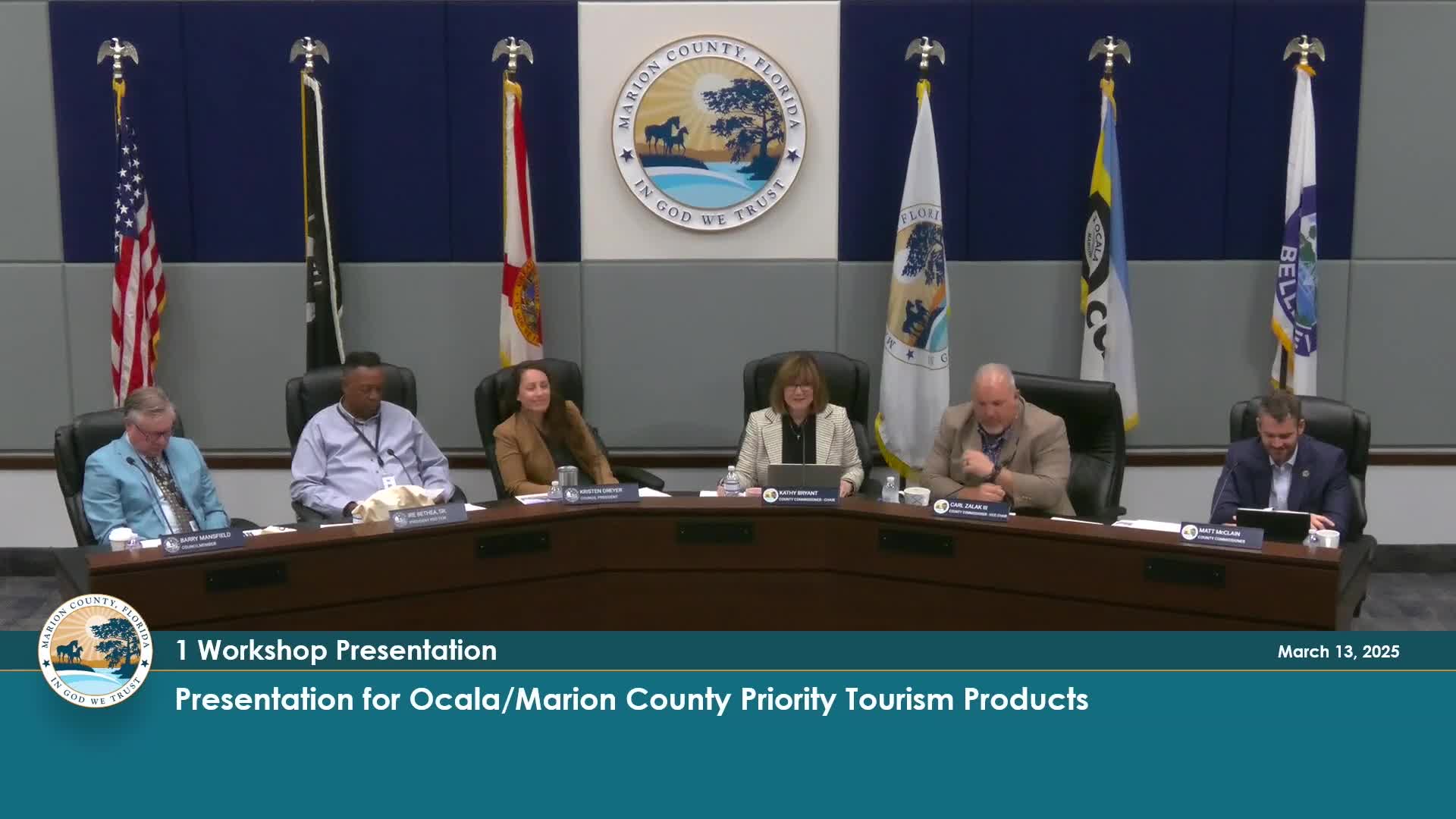Marion County officials propose EMS impact fees to fund emergency services growth
March 13, 2025 | Marion County, Florida
This article was created by AI summarizing key points discussed. AI makes mistakes, so for full details and context, please refer to the video of the full meeting. Please report any errors so we can fix them. Report an error »

In a recent joint workshop held on March 13, 2025, the Marion County Board of County Commissioners and the City of Ocala discussed the pressing need for implementing emergency medical services (EMS) impact fees. The meeting, led by Fire Chief James Banta and Deputy Chief Robert Graffiti, highlighted the increasing demand for emergency services as the county's population continues to grow.
Currently, Marion County does not collect any fire or EMS impact fees, which poses a challenge as new developments increase the demand for these essential services. The proposed EMS impact fees aim to ensure that new growth contributes fairly to the costs associated with expanding emergency services infrastructure. This initiative is particularly significant as Marion County is projected to grow at an annual rate of 0.9% through 2050, making it the 18th most populous county in Florida.
The discussion emphasized the importance of a collaborative approach, particularly with the City of Ocala, which provides its own fire services. For the EMS impact fees to be effective, Ocala would need to agree to collect these fees within its jurisdiction. This partnership is crucial for maintaining consistent funding for emergency medical services across the county.
Chief Banta provided historical context, noting that fire rescue impact fees were previously adopted in 2002 but were suspended in 2010 and ultimately repealed in 2015. The current proposal seeks to reinstate these fees and introduce EMS impact fees for the first time. The methodology for calculating these fees is based on the demand each type of land use places on emergency services, ensuring that new developments are charged appropriately.
The financial implications of the proposed fees were also discussed. For instance, a 1,500 square foot home would incur an EMS impact fee of approximately $208. Projections indicate that if the fees are implemented countywide, including Ocala, they could generate an estimated annual revenue of $1.8 million.
Next steps include gathering stakeholder agreements, particularly with the City of Ocala, and holding a public hearing to adopt the service area impact fee ordinance. The discussions at this workshop underscore the county's commitment to ensuring that as Marion County grows, its emergency response capabilities remain robust and adequately funded.
Currently, Marion County does not collect any fire or EMS impact fees, which poses a challenge as new developments increase the demand for these essential services. The proposed EMS impact fees aim to ensure that new growth contributes fairly to the costs associated with expanding emergency services infrastructure. This initiative is particularly significant as Marion County is projected to grow at an annual rate of 0.9% through 2050, making it the 18th most populous county in Florida.
The discussion emphasized the importance of a collaborative approach, particularly with the City of Ocala, which provides its own fire services. For the EMS impact fees to be effective, Ocala would need to agree to collect these fees within its jurisdiction. This partnership is crucial for maintaining consistent funding for emergency medical services across the county.
Chief Banta provided historical context, noting that fire rescue impact fees were previously adopted in 2002 but were suspended in 2010 and ultimately repealed in 2015. The current proposal seeks to reinstate these fees and introduce EMS impact fees for the first time. The methodology for calculating these fees is based on the demand each type of land use places on emergency services, ensuring that new developments are charged appropriately.
The financial implications of the proposed fees were also discussed. For instance, a 1,500 square foot home would incur an EMS impact fee of approximately $208. Projections indicate that if the fees are implemented countywide, including Ocala, they could generate an estimated annual revenue of $1.8 million.
Next steps include gathering stakeholder agreements, particularly with the City of Ocala, and holding a public hearing to adopt the service area impact fee ordinance. The discussions at this workshop underscore the county's commitment to ensuring that as Marion County grows, its emergency response capabilities remain robust and adequately funded.
View full meeting
This article is based on a recent meeting—watch the full video and explore the complete transcript for deeper insights into the discussion.
View full meeting